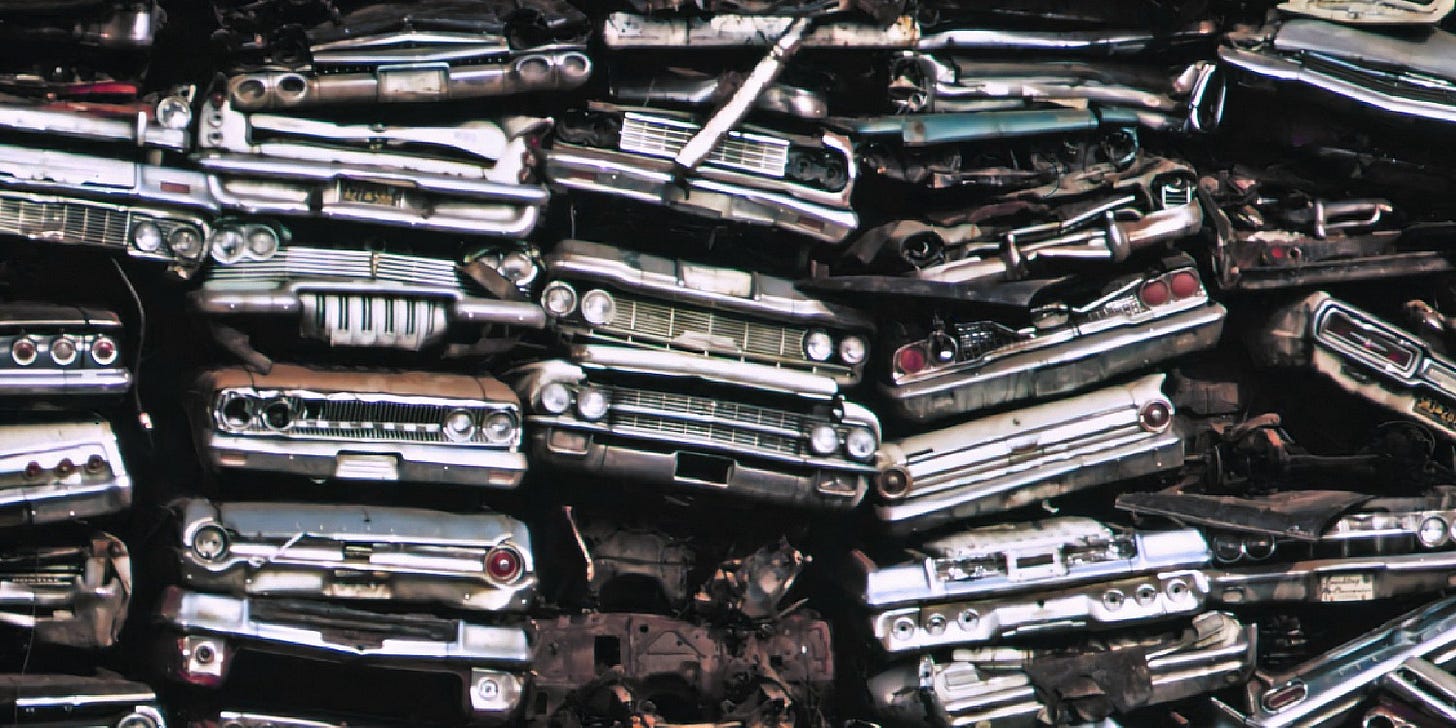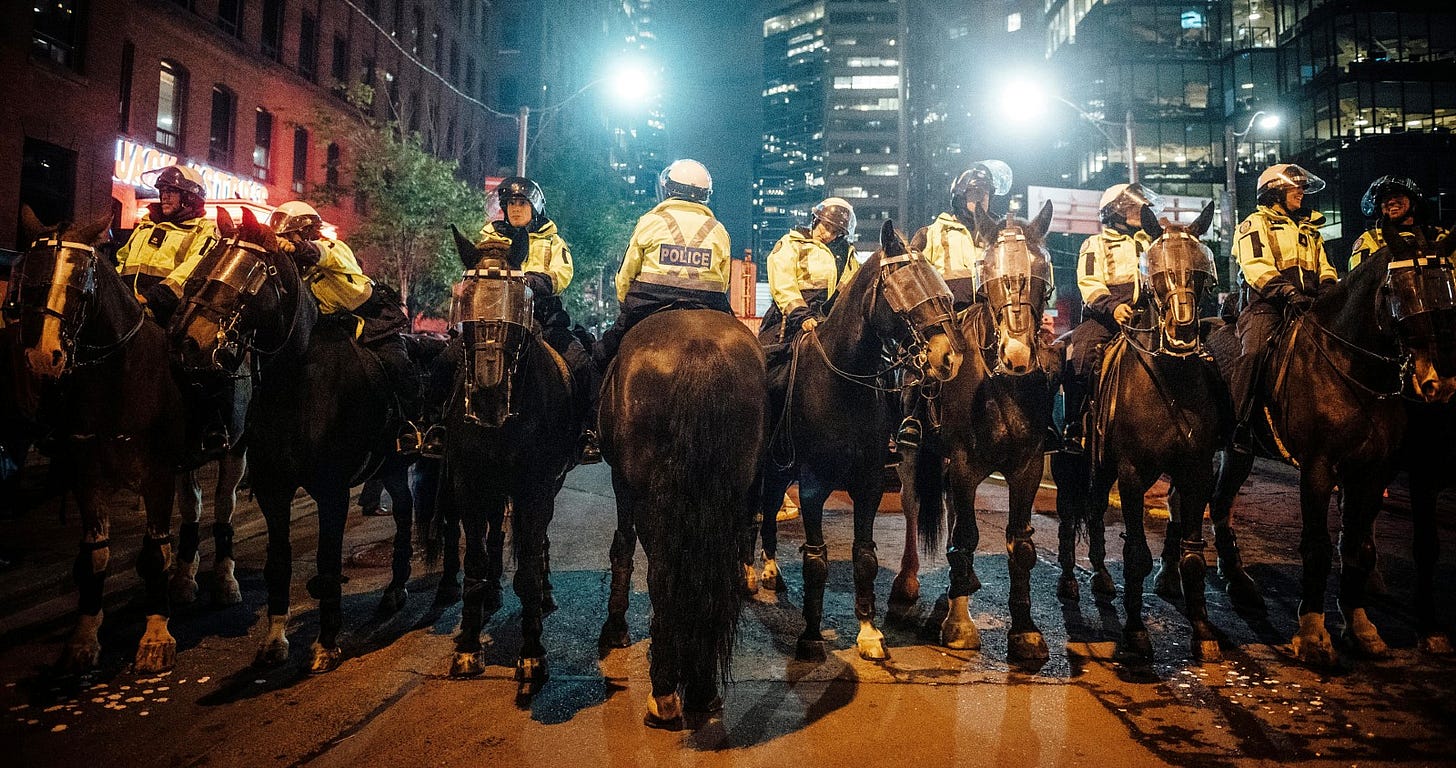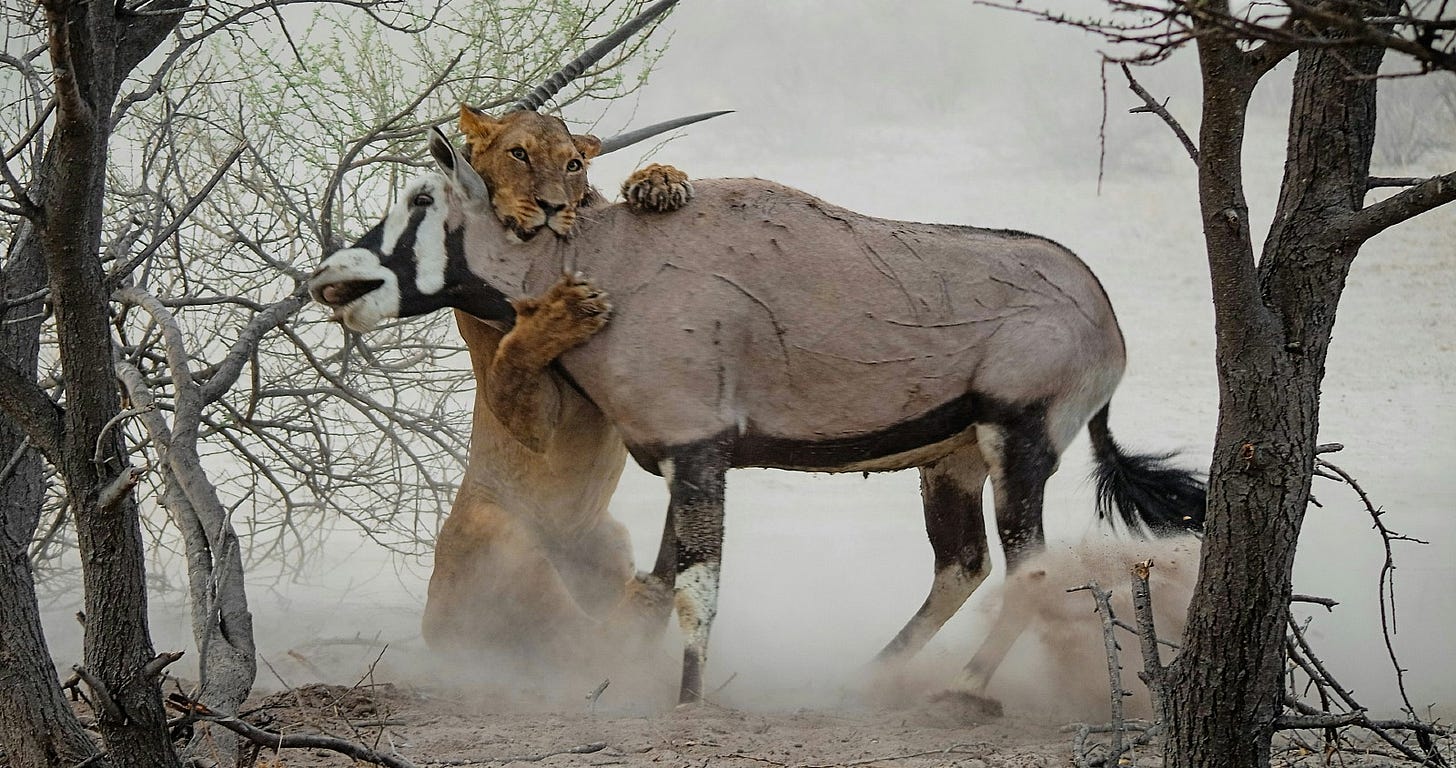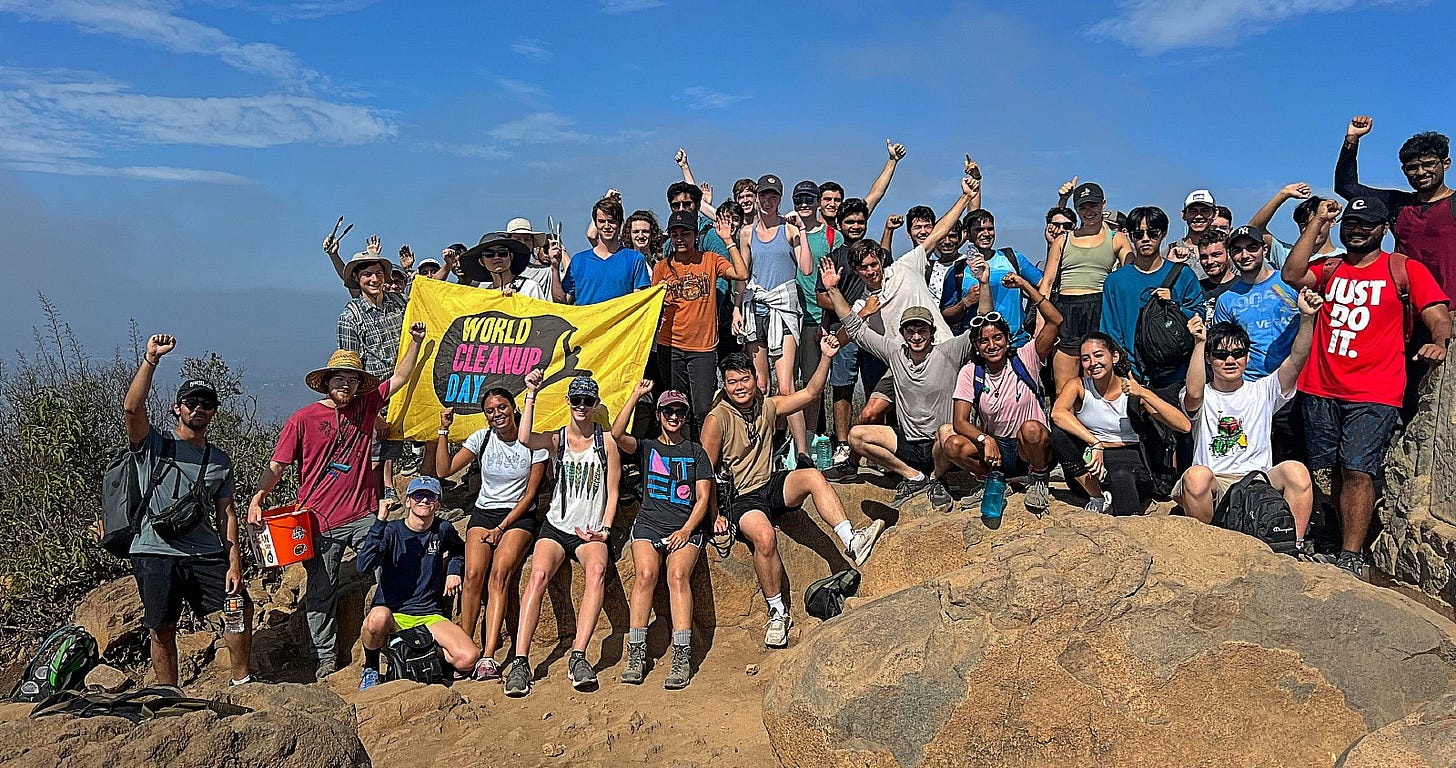The Invisible Crisis
Unraveling Our Collective Blindness to Environmental Collapse
A finite planet with 8 billion people exploiting the fossil fuel energy pulse, no landscape left pristine, and pollution everywhere. Why is this picture so hard to see?
You're scrolling through your phone, sipping coffee from a disposable cup, when you stumble upon a headline about record-breaking temperatures. You pause, frown, and then keep scrolling.
A notification pops up—a friend shared a video of a beach buried in plastic with a comment about sadness. You sigh, then switch to a different app.
Later, you drive past a construction site where a forest once stood. You barely notice.
Welcome to the paradox of our times.
Why do humans—a species capable of sending robots to Mars, transplanting organs from one to another, and creating artificial intelligence—struggle to comprehend the environmental havoc we're wreaking on our planet? What mental gymnastics are we performing to avoid confronting the blindingly obvious?
In this edition of Become a Mindful Sceptic, we’ll get to know our buddy Blind Freddie, the imaginary person supposed to have little or no perception to explore the psychological barriers that keep us from seeing what's right in front of us.
Here we go, risking everything to remove the blinders and confront the environmental elephant in the room.
It's time to see the world with fresh, unfiltered eyes—even if what we see makes us squirm in our seats.
Net primary production
I've been thinking about why the big picture is so hard to see.
It is odd because the crisis stories from climate change to biodiversity loss to growing enough food are easy enough to explain, and the reasons are apparent—8 billion people, all with the desire to live like kings.
It's classic Blind Freddy—the imaginary person supposed to have little or no perception. What Blind Freddy can understand must be very obvious.

Pause on biodiversity loss for a moment.
Biodiversity is in decline because humans have increased disturbance by messing with nature and appropriating one-quarter of net primary production (NPP). NPP is the amount of energy plants capture through photosynthesis minus the energy they use for respiration. It represents the total new biomass produced by plants, which forms the basis of nearly all terrestrial food chains.
Humans have used more and more of this biomass for themselves and their animals. The technical term for this is Human Appropriation of Net Primary Production (HANPP), which refers to the amount of biomass humans consume or alter compared to what would be available in a natural ecosystem—how much of the Earth's biological productivity is used by humans.
When this happens, less biomass is available for non-human organisms, and what is there is in a more simplified form, so there is not enough to share with all the organisms on the planet when most of it is channelled for the use of one species.
HANPP has risen from 6.9 Gt of carbon per y in 1910 to 14.8 GtC/y in 2005, i.e., from 13% to 25% of the net primary production of potential vegetation. Biomass harvested per capita and year has slightly declined despite growth in consumption because of a decline in reliance on bioenergy and higher conversion efficiencies of primary biomass to products. The rise in efficiency is overwhelmingly due to increased crop yields, albeit frequently associated with substantial ecological costs, such as fossil energy inputs, soil degradation, and biodiversity loss. If humans can maintain the past trend lines in efficiency gains, we estimate that HANPP might only grow to 27–29% by 2050, but providing large amounts of bioenergy could increase global HANPP to 44%.
Fridolin Krausmann, Karl-Heinz Erb, Simone Gingrich, Helmut Haberl, Alberte Bondeau, Veronika Gaube, Christian Lauk, Christoph Plutzar, and Timothy D. Searchinger (2013) Global human appropriation of net primary production doubled in the 20th century. PNAS June 18, 2013 110 (25) 10324-10329; https://doi.org/10.1073/pnas.1211349110
Only it's worse than just the appropriation.
As researchers from Rutgers, The State University of New Jersey, established and reported in a 2018 paper in PNAS, humans and their livestock make up 96% of the mammalian biomass.
Appropriate a quarter of the fundamental unit of existence—plants capturing the sun's energy through photosynthesis to produce fuel that animals respire—and loss of diversity is inevitable. If one species takes over resources and channels them into food for itself, eventually, there is not enough for the other species.
There are fewer predators than there were because our fences, extermination and vigilance stopped them from eating livestock. Blind Freddy?
Oh yes, and the appropriation process uses energy and materials that readily pollute the air, land and water, further stressing the organisms that have just had a bunch of their food source appropriated.
Yet, accepting this obvious consequence appears beyond us.
Once humans figured out that ancient energy captured by plants was stored in the deep layers of the earth's sedimentary rocks and that drills or mine shafts could bring that energy out of the ground, they went for it. And why not? The innate biology we share with all other organisms on the planet is to defy entropy and make more. It is the driver of evolution and is, quite literally, in our genes.
Perceptionless Frederick again.
The atmosphere's composition will change with all that burning of ancient plant material. And when the products of those burns are the gasses that keep the planet warm, surprise: more energy is retained in the atmosphere and the climate changes.
A staggering 'no brainer'.
Again, it is as though we can't accept the obvious.

Why are we so blind?
For one thing, we are stuck in the present. People tend to prioritise immediate concerns over long-term threats—this is the present bias we explored in an earlier issue. We tend to see the present, think of it as usual, and quickly forget that change is constantly happening. We see the immediate rather than the trend.
Discounting the future in favour of today is a cognitive bias, one of several systematic patterns of deviation from norm or rationality in judgment and decision-making. These biases are inherent tendencies in human thinking that can lead to perceptual distortion, inaccurate judgment, illogical interpretation, or irrationality. And we all do it, most of the time.
Contrary to the assumptions in the economic models, we are irrational actors.
Additionally, many environmental problems evolve slowly, making their impacts less noticeable in day-to-day life and, therefore, easier to ignore.
Then, there are the costs of seeing the bigger picture.
Many industries and businesses rely on environmentally unsustainable practices that are economically profitable in the short term. They do this because we wrote into law the requirement for the people who run these enterprises to maximise shareholder value. Wherever possible, they have to make a profit.
Unsurprisingly, there is resistance to changing any successful business model. Economic inertia is further reinforced by existing infrastructure and systems designed around unsustainable practices, making transitions to more environmentally friendly alternatives costly and challenging. We see business as usual, and it is good.
Then there is what Maddison Avenue did to us all. It tapped into and augmented consumerism and materialistic values that are now deeply ingrained in many societies and drive unsustainable consumption patterns. We see the new handbag and an upgrade to the midlife sports car before we see anything else, and in this, we are all culpable.
This was an easy sell because of an innate human tendency to maintain the status quo and avoid personal inconvenience.
Only to see the herd of environmental elephants stomping about the living room is one thing. Doing something about it is another. You can’t just say, ‘shoo, out you go’ to multiple pachyderms.
The acute and often global nature of many environmental issues requires collective action, including international cooperation, which is usually challenging due to conflicting national interests and the tragedy of the commons.
The tragedy of the commons occurs when individuals have open access to a shared, limited resource. Motivated by self-interest, each person is incentivised to maximise their resource use. However, if everyone acts this way, the resource becomes overexploited and may be destroyed, ultimately harming everyone.
Avoiding personal inconvenience—I want my cake now, please—also gives us the influence of special interest groups, and the short-term focus of electoral cycles can lead to policy decisions that prioritise immediate economic or political gains over long-term environmental sustainability. There's no need to worry about tomorrow's cake; I can give you a slice today with cream on the side.
These psychologies cloud the eyes but also limit the options to resolve crises, from climate change to biodiversity loss to growing enough food. It's okay to recognise the problem if there is a solution—not okay if there isn't one.
We need imaginative solutions for biodiversity loss because we must still feed everyone well.
We don't have a solution for climate change because while we focus on reducing emissions and transferring away from the fossil fuel economy into alternative energy sources, there's no guarantee that emission control will reverse climate change. We still have to sequester (remove from the atmosphere) a vast amount of the carbon dioxide that we've pumped into the sky.
In other words, there are few obvious solutions. And the ones we have are not popular.
Another reason for not being able to see the blindingly obvious is our ignorance.
It's remarkable how little most people understand about the world around them. People are not curious; they have lost their innate abilities to understand and connect with nature.
As we've become cocooned in our homes, glued to our drama augmented by binged episodes of Real Housewives, the requirement to understand where all of it came from and whether or not we need to do anything to keep it going beyond getting up and going to work seems to have passed a lot of us by.
And the old dogs who have spent a lifetime enjoying the hard work of the fossil fuel slaves and having dominion don’t want to learn new tricks.
They just bark at you.
The youngsters seem to see it
The encouraging part is that the youth may be paying attention.
Many youngsters, most still in school, are railing against climate issues and protesting for their future. They want changes so they have opportunities. Somehow, they've twigged that their world might not be as great as the one their parents inherited and certainly not as great as the one their grandparents looked forward to.
This is an encouraging sign. And what we hope, though, is that they channel some of that passion into protest and get the messages heard by the stupid white men.
Passion is a great start. However, they must also channel that energy into curiosity and critical thinking. Pause momentarily, and humanity can’t ‘just stop oil’ because we would starve.

A 2004 study published in Nature calculated the proportion of dietary protein from crops and estimated that about 40% of the nitrogen in the average human body originated from synthetic fertilisers. We make, transport and apply these fertilisers with fossil fuels. We can’t stop oil; we have to transition out of it.
We have those active young minds, most augmented by smart devices. The solutions to all global problems come from the imagination of the youth. They can come up with ideas that are practical, rational and achievable.
This means they need to understand how the world works. They must build the capability to know so they can filter their ideas and not depend on the historical thinking of the people who got us into this mess.
And you have to admire them. Here are just a few initiatives from the youngsters who have their eyes open.
Intergenerational equity—in a landmark Juliana v. United States case, 21 young plaintiffs sued the U.S. government for violating their constitutional rights to a stable climate. Such legal challenges highlight how young people recognise that current generations have a moral obligation to preserve the environment for future generations.
Environmental policy—the Fridays for Future movement, started by Greta Thunberg, has mobilised millions of students worldwide to demand climate action. Similarly, organisations like the Sunrise Movement in the U.S. have successfully pushed for political action on climate change, influencing debates and policy proposals like the Green New Deal.
Environmental initiatives—the youth are digital natives, able to ‘reel’ their way on social platforms like TikTok and Instagram to drive ecological education and activism. For example, the #TeamTrees campaign, initiated by YouTubers Mr. Beast and Mark Rober, raised over $20 million to plant 20 million trees, demonstrating the potential of social media to drive large-scale environmental initiatives.
Global mindset—youngsters are joining international youth networks like YOUNGO, the official youth constituency of the United Nations Framework Convention on Climate Change to collaborate on climate action. A global perspective exchanges ideas and strategies across borders, fostering innovative solutions to shared environmental problems. If you live in a Western democracy it is important to know that a billion people live on less than $10 a day.
Young entrepreneurs—companies like Ecosia, a search engine that uses its profits to plant trees, or Impossible Foods, which develops plant-based meat alternatives, demonstrate how youth-led enterprises can combine environmental consciousness with business acumen.
None of this comes free. The psychological resilience of young environmental activists is essential for sustaining long-term engagement. The rise of "eco-anxiety" among youth has led to programs like the Good Grief Network, which offers support groups for climate activists and provides valuable resources for managing the emotional toll of ecological advocacy.
The overwhelming feeling that comes from seeing the invisible crisis is one of the reasons we started this newsletter.
Become a mindful sceptic and transform your approach to understanding and engaging with complex environmental and social issues.
Becoming a mindful sceptic isn't just about changing how you think—it's about transforming how you engage with the world around you. It equips you with the tools to navigate the complexities of our time, fostering a more informed, balanced, and impactful approach to the pressing environmental and social issues we face.
How a mindful sceptic opens their eyes
Here are three ways to transform how you engage with the world around you…
Seek out diverse and credible sources of information
A mindful sceptic understands the importance of gathering information from a wide range of reputable sources. They might start by reading peer-reviewed scientific journals to understand the latest research on environmental issues. However, they wouldn't stop there.
They would also explore reports from international organizations like the UN Environment Programme or the Intergovernmental Panel on Climate Change. To gain a more rounded perspective, they might seek out economic analyses from institutions like the World Bank or the International Monetary Fund to understand the economic implications of environmental challenges.
Additionally, they would consider perspectives from various stakeholders, including environmental NGOs, industry representatives, and local communities affected by environmental issues.
Fortunately, none of this needs to be done the hard way, in the academic library, sifting through the shelves of dusty journals. Ah, those were the days. But no more. Most of what you need to know is online, and there is a chatbot or six specialised in sifting through and summarising it.
Ask the right questions, and the tools will find reliable answers.
My current favourites are Perplexity.ai, SciSpace, and Google’s Notebook LM.
Here is another eye-opener.
Practice systems thinking
Environmental issues are often interconnected and complex, involving multiple feedback loops and unintended consequences.
A mindful sceptic might cultivate systems thinking skills to better understand these relationships. They might start by creating mind maps or causal loop diagrams to visualise the connections between different aspects of an environmental issue. For example, when considering deforestation, map out the immediate environmental impacts, economic drivers, social consequences, and potential feedback loops, such as how deforestation might affect local climate, which could impact agricultural productivity.
Consider how interventions in one area might have ripple effects throughout the system. This approach helps to avoid oversimplified solutions and promotes a more nuanced understanding of environmental challenges.
Engage in experiential learning and reflection
While academic and theoretical knowledge is crucial, a mindful sceptic recognises the value of firsthand experience and personal reflection.
Seek opportunities to engage directly with environmental issues through volunteering, citizen science projects, or spending time in nature. For instance, participate in a local beach clean-up to gain firsthand insight into marine pollution issues or join a citizen science project to monitor local biodiversity. After these experiences, reflect on how these insights relate to your existing knowledge and how it might challenge or confirm previous assumptions.
I know. It is hard. This is because there is a reason Freddy keeps his eyes shut. It is so much easier
Embracing the Big Picture for Environmental Action
Blind Freddie is an Australian colloquial expression used to describe something that is extremely obvious or easy to perceive—‘even Blind Freddie could see that’ goes with similar hyperbolic expressions like ‘clear as day’ or ‘plain as the nose on your face.’
Appropriate a quarter of the biomass, take up 96% of the mammal biomass, radically alter every habitat on the planet, turning them into landscapes, and change is inevitable. Local and global systems are different from what they were just a few hundred years ago—they are disturbed.
We should see this every time we leave the house.
Instead, we tend to avoid problems without clear solutions, disconnect from nature, resist change, fail to educate ourselves and give in to our psychoses.
This makes the crisis invisible, and we feel a whole lot better.
A surge of youth engagement offers hope. The passion and dedication of young environmental activists, armed with digital savvy and a global mindset, present a powerful force for change. They seem to be better at the interconnectedness of environmental issues, from climate change to biodiversity loss, and are more willing and able to confront how human activities are reshaping our planet's ecosystems.
No surprise there. It is their future. Freddie can see that.
Key Points
The environmental crisis we face today is simultaneously conspicuous and invisible. While the evidence surrounds us—from disappearing forests to changing weather patterns—our psychological barriers, including present bias and economic inertia, prevent us from fully acknowledging these changes. This collective blindness isn't just inconvenient; it's a crucial obstacle to addressing urgent environmental challenges.
Human appropriation of the Earth's resources has reached staggering levels, with humanity now consuming or altering about 25% of the planet's net primary production (HANPP). This appropriation, combined with the fact that humans and their livestock now comprise 96% of mammalian biomass, demonstrates the unprecedented scale of our impact on Earth's systems. Understanding these metrics helps us grasp the magnitude of our environmental footprint.
Youth activism represents a powerful force for environmental awareness and change, demonstrating that younger generations can see what many adults choose to ignore. From legal challenges for intergenerational equity to innovative social media campaigns for environmental action, young people combine passion with practical solutions. Their global mindset and digital savvy offer new approaches to addressing environmental challenges.
Becoming a mindful sceptic offers a pathway through our collective environmental blindness. By seeking diverse sources of information, practicing systems thinking, and engaging in experiential learning, we can develop a more comprehensive understanding of environmental issues. This approach helps us move beyond simple acknowledgment of problems to meaningful action, balancing critical thinking with open-minded awareness of our planet's interconnected challenges.
Mindful Momentum
This week, challenge yourself to look at your surroundings with fresh eyes.
What evidence of environmental change can you see?
Share your observations in the comments, and let's discuss how we can collectively sharpen our perception of these crucial issues.
You Might Also Like
In the next Issue
When world leaders gather to discuss climate change, they face a barrage of questions. But are they the right ones?
Drawing from four decades of ecological research across four continents, I'll share how asking better questions transformed my understanding of complex environmental systems. You'll discover practical frameworks for crafting questions that cut through the political noise and drive meaningful action.
Whether preparing for a classroom presentation or trying to make sense of the latest climate headlines, these insights will reshape how you think about environmental inquiry.
Thank you for choosing curiosity over certainty and evidence over ideology.
If this exploration into mindful scepticism equipped you with better questions, deeper understanding, or simply confirmed that thinking critically about environmental issues matters, I'm genuinely grateful.
Supporting independent, research-based analysis helps ensure these conversations keep going.









